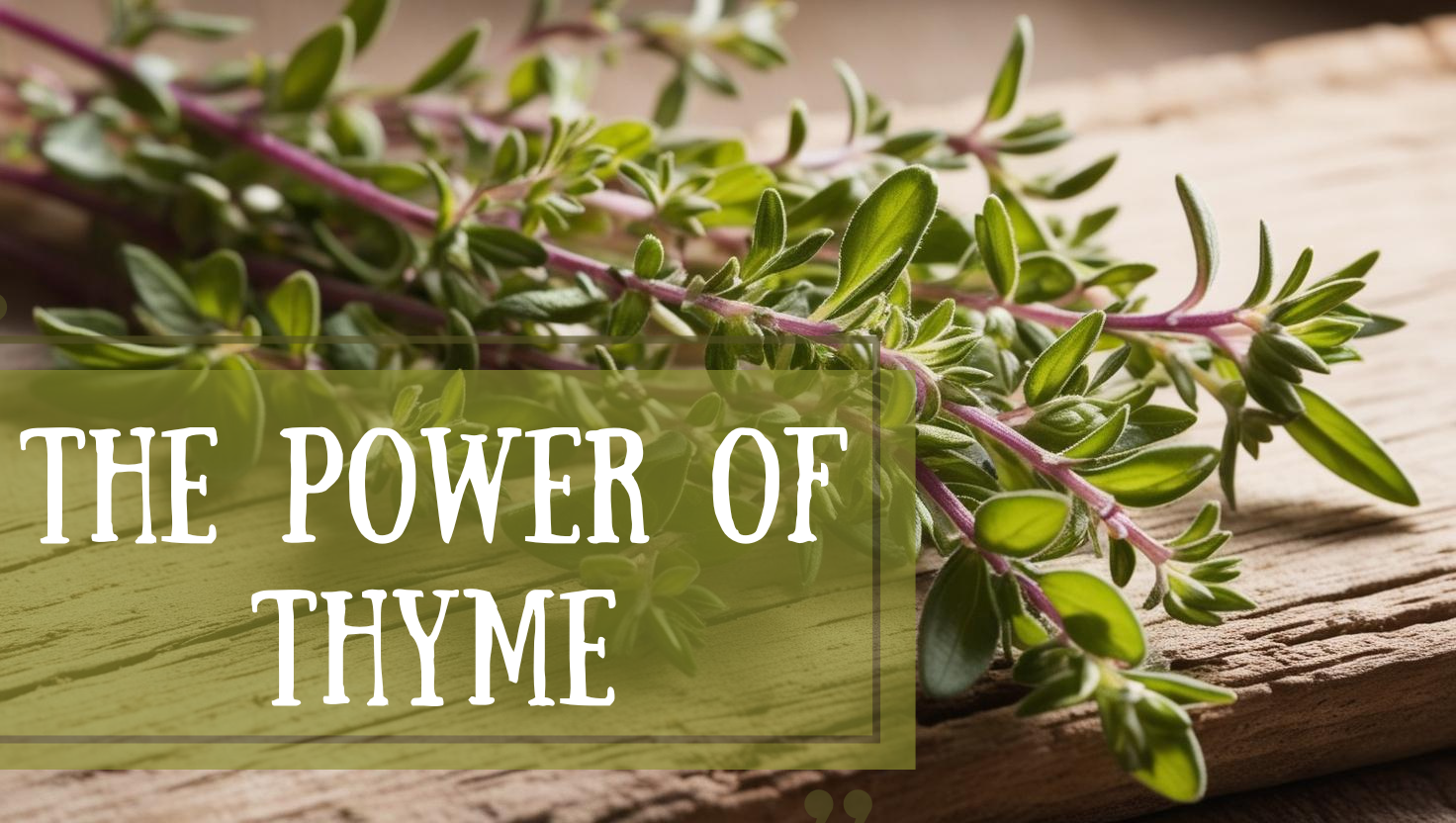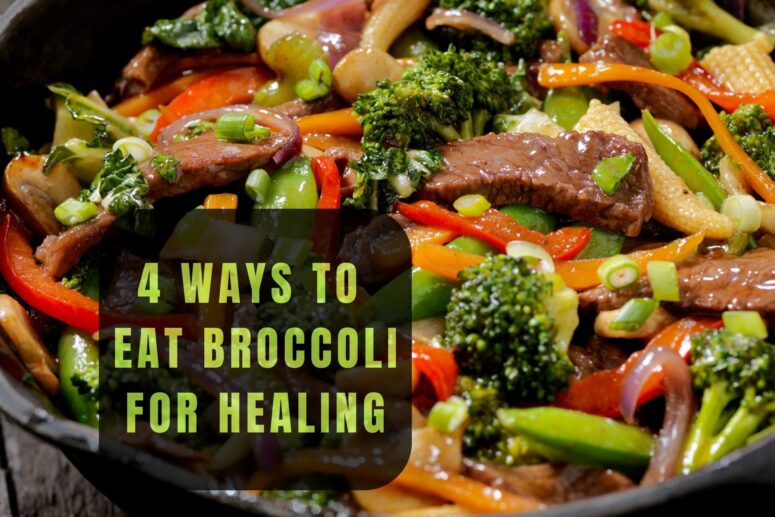The Power of Thyme: Exploring Uses for Health and Healing
Love thyme for so many reasons – the smell, taste, the way it looks in the garden… but most of all for its natural healing abilities. I’m guessing that most of you probably have thyme in your kitchens and use it in many of your recipes.
For centuries, thyme has been used as a medicinal herb, offering accessible and straightforward home remedies.
So, what are the natural benefits of thyme and how do you use it? Let’s talk about it!
A Quick History Lesson
Thyme was first used by the ancient Egyptians, in their embalming processes, and Greeks believed that thyme was a symbol of courage and was used as a remedy for various ailments.
- Improves Respiratory Health
If you’re experiencing a cough or congestion, thyme is a great way to open your airways and loosen mucus. Thyme is an expectorant, which increases the production of saliva and thins mucus.
How Use It:
- Boil a pot of water, then turn off burner
- Add a sprig of thyme
- Let it soak in the hot water for about 10 minutes
- Remove from heat and pour yourself a cup of tea
Optional Additional Ingredients:
- Ginger
- Honey
- Berries
- Lemon
- Garlic
This natural herbal tea is great for loosening mucus. To see the best result, drink 2-3 cups a day.
- Reduces Cold and Flu Symptoms
One of the main properties in thyme is thymol, which has strong antibacterial and antiviral effects. What does that mean? Well, thyme can help fight off viruses and bacteria that cause your cold and flu. This healing herb’s anti-inflammatory properties can reduce inflammation and irritation in your nose, throat and chest. While thyme tea will reduce cold and flu symptoms, there are additional uses to knock your symptoms out!
How to Use It:
- Boil a pot of water
- Add a few (2-3) thyme sprigs
- Place a towel over your head and the pot as you lean over the pot
- Breathe deeply for 5-10 minutes
Another way to accomplish this steam inhalation technique is to make a thyme steam bath. You can do this by adding a few sprigs of thyme to your warm bath. These techniques soothe inflammation in your lungs and throat, and ease respiratory discomfort and congestion.
- Helps Heal and Reduces Severity of Cold Sores
Cold sores are blisters around the mouth and lips, caused by the HSV-1 virus. The antiviral properties in thymol can reduce the severity of your cold sores and prevent them from spreading.
How to Use It:
- Place a few sprigs of thyme (or about a 1⁄4 cup of dried thyme) in a jar
- Cover thyme with olive or coconut oil
- Seal the jar
- Sit the jar in a warm and sunny spot for 1-2 weeks and shake the jar every other day
- After 1-2 weeks, strain out the thyme and store it in a new, clean jar
- Apply thyme oil to your cold sore as needed
This simple thyme essential oil recipe helps get rid of cold sores due to its antimicrobial properties. You can also dilute store-bought thyme essential oil with coconut, olive or almond oil and apply it directly to your cold sores 2-3 times a day.
- Supports Digestive Health
The carminative (gas-relieving) and antispasmodic (reduces cramps and pain) properties of thyme make it the perfect remedy for digestive discomfort and health.
How to Use It:
- Place a small handful of dried thyme in a jar
- Add about 5 ounces of high-proof alcohol (vodka, brandy, etc.)
- Seal and shake the jar
- Store the jar in a dark and cool place for 2-3 weeks and shake every 1-2 days
- After 2-3 weeks, strain out the thyme
- Transfer the strained liquid, or tincture, into a dropper or clean jar and store in a dark and cool place
- Take 20-30 drops of the tincture a day to support digestive health
The above tincture recipe supports digestion and gas relief. You can also add the tincture drops to water, tea or juice to help the taste.
Practical Tips for Using Thyme in Everyday Life
- Tea: Brew thyme-infused tea to support digestive and respiratory health. It can also help with
your skin health, menstrual pain cold, symptoms and even anxiety!
- Inhalation: Boil thyme to clear congestion and help with cold and flu symptoms.
- Cooking: Add thyme to soups, stews, chicken and drinks for a natural immunity boost.
- Oil: Use either store-bought or homemade thyme essential oil sparingly. It can be applied
topically or used in aromatherapy to reduce anxiety and stress.
How to Grow Thyme at Home
Get creative and grow your own thyme! The official plant name is Thymus vulgaris.
- Plant in a sunny spot: Thyme thrives in the sun and needs at least 6 hours of direct sunlight per day.
- Use well-draining soil: Thyme does not like soggy soil! Ensure your thyme has proper drainage.
- Water moderately: Thyme prefers dry conditions and, once established, is drought-tolerant and doesn’t need as much watering. Water only once the soil feels dry but avoid overwatering.
- Prune and Harvest: Trim long stems regularly to promote growth. After a few months, or once your thyme has matured, snip just above the leaf nodes (where the leaves grow) so the thyme will continue to grow.
Thyme has many natural health benefits and remedies. The above recipes can be used in combination with other medicinal herbs to relieve stress, muscle pain, cold symptoms and menstrual cramps. They can also support digestive health, your immune system and your skin health. The good news is that thyme is a perennial plant, meaning that once it’s established, it will keep growing without the need to replant.
I love learning new uses for these herbs and what remedies work best, so, please share your thoughts and suggestions!
Explore our whole page of natural remedies! Here at GreenDesert.org, we’re always looking to grow our community. If you have ideas, please share them!






